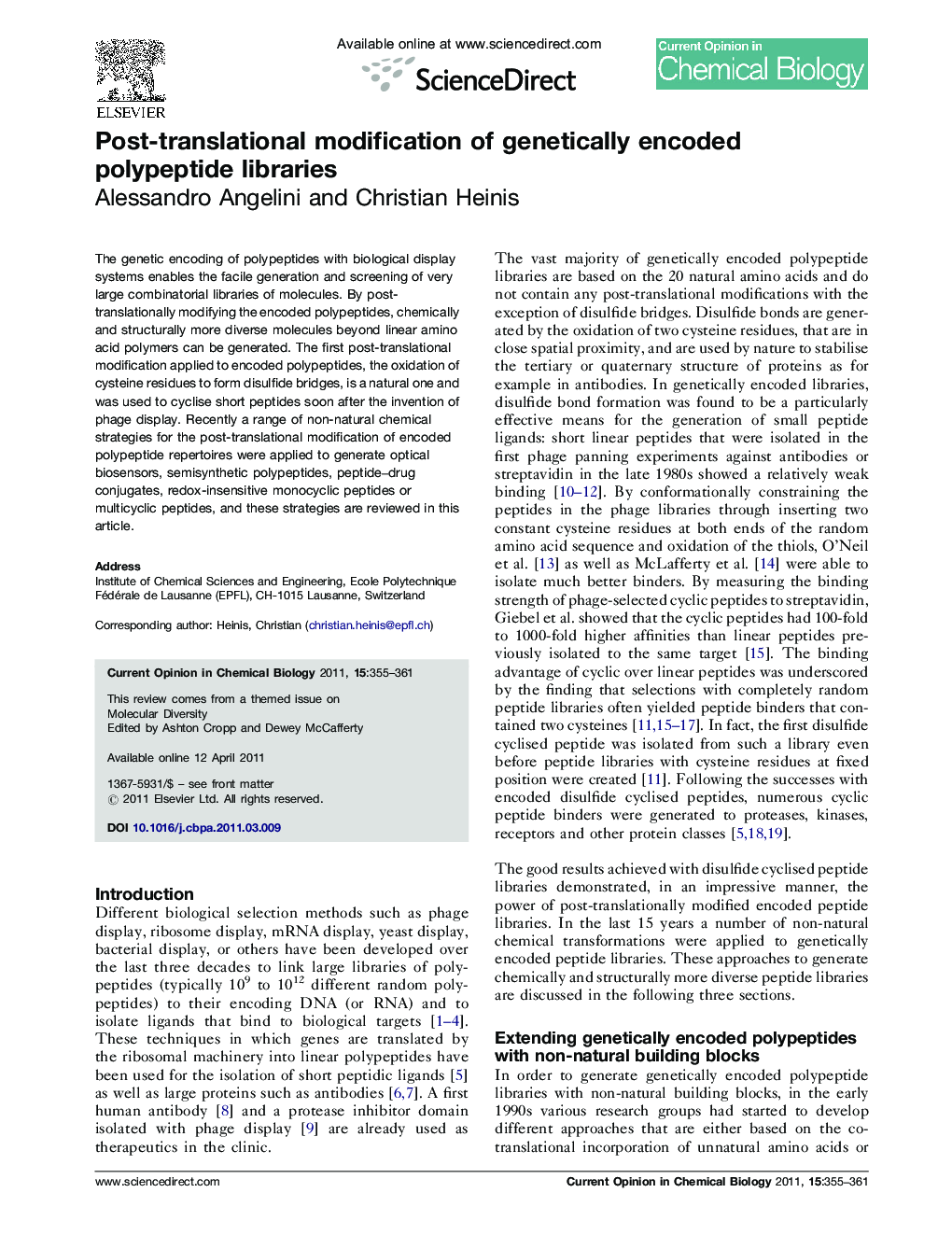| Article ID | Journal | Published Year | Pages | File Type |
|---|---|---|---|---|
| 1256681 | Current Opinion in Chemical Biology | 2011 | 7 Pages |
The genetic encoding of polypeptides with biological display systems enables the facile generation and screening of very large combinatorial libraries of molecules. By post-translationally modifying the encoded polypeptides, chemically and structurally more diverse molecules beyond linear amino acid polymers can be generated. The first post-translational modification applied to encoded polypeptides, the oxidation of cysteine residues to form disulfide bridges, is a natural one and was used to cyclise short peptides soon after the invention of phage display. Recently a range of non-natural chemical strategies for the post-translational modification of encoded polypeptide repertoires were applied to generate optical biosensors, semisynthetic polypeptides, peptide–drug conjugates, redox-insensitive monocyclic peptides or multicyclic peptides, and these strategies are reviewed in this article.
